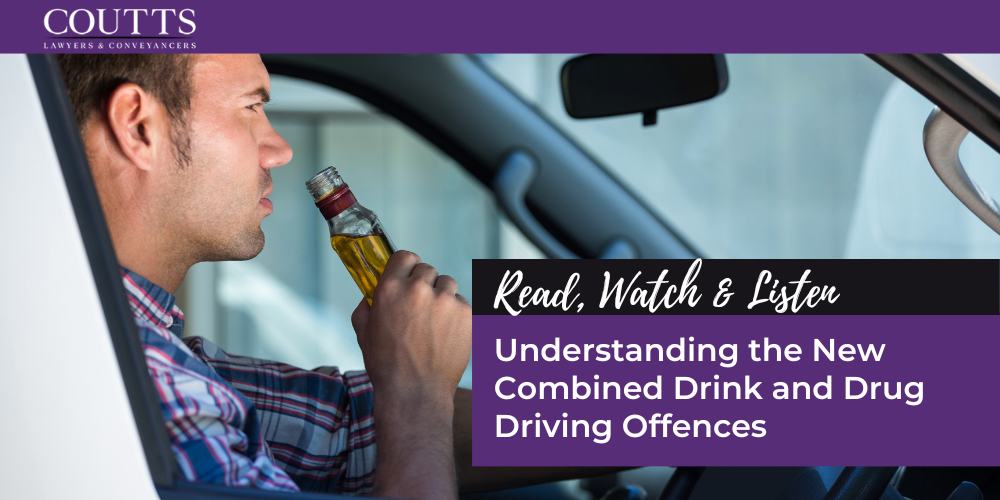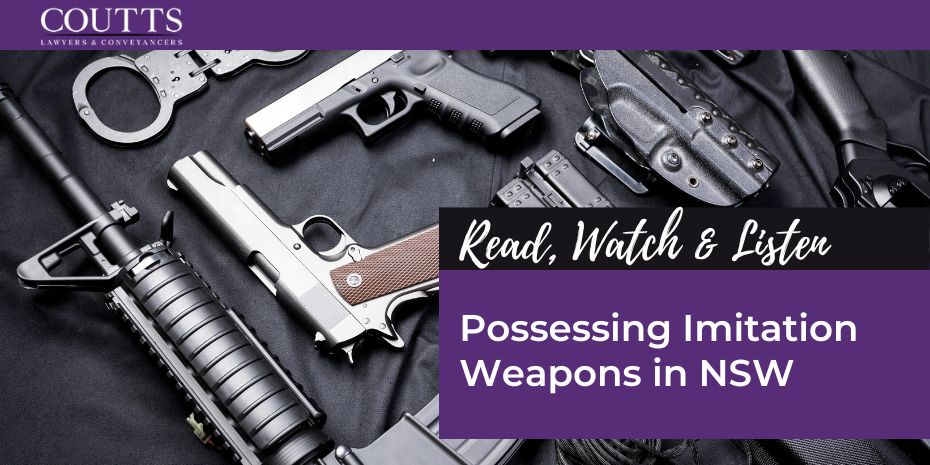KEY TAKE-OUTS:
- The NSW Government has introduced a new section to the Road Transport Act 2013 which makes it an offence to drive with both alcohol and illicit substances in your system.
- According to information published by Transport for NSW, the combined use of alcohol and drugs increases the risk of a fatal crash by 23 times.
- The changes were introduced as per a scheme of larger reforms which are aimed at reducing fatalities and deterring high-risk behaviour on the road.
As many road users would be aware, the NSW Government has recently cracked down on driving offences with a range of new measures being gradually rolled out in an attempt to reduce fatalities and introduce harsher penalties for drivers caught using their mobile phone, speeding, or driving with drugs or alcohol in their system.
A new “combined” drink and drug driving offence came into effect on 28 June 2021. This offence was introduced as a means of deterring high-risk behaviour by creating a new scheme of tough penalties compared to those which were previously available for separate drink driving and driving with illicit drug offences. The new combined offence carries heavy fines and lengthy automatic licence disqualification periods for those who are convicted of the offence.
It is widely recognised that alcohol and drugs can seriously affect your driving skills and mixing drugs increases the likelihood of being involved in a fatal accident. According to information published by Transport for NSW, the combined use of alcohol and drugs increases the risk of a fatal crash by 23 times.
In recognition of the risk that combining drink and drug driving has to the safety of road users, the NSW Government introduced section 111A of the Road Transport Act 2013. This section makes it an offence for a person to do any of the following whilst there is alcohol and a prescribed illicit drug present in their oral fluid, blood, or urine:-
- Drive a motor vehicle, or
- Occupy the driver’s seat of a motor vehicle and attempt to put the motor vehicle in motion, or
- If the person is the holder of an applicable driver licence, other than an applicable provisional licence or applicable learner licence – occupy the seat in a motor vehicle next to a learner driver who is driving the vehicle.
The penalties for the combined drink and drug driving offences differ depending on the prescribed concentration of alcohol present in the person’s breath or blood. A breakdown of the penalties for combined drinking and alcohol offences under s11A of the Road Transport Act 2013 is as follows:
| Prescribed level of alcohol | Penalty | Disqualification |
| High range prescribed concentration of alcohol+ illicit drug/s – 1st offence | 50 penalty units ($5,500 fine) or 2 years imprisonment or both | Automatic 4 years or Minimum 18 months |
| High range prescribed concentration of alcohol + illicit drug/s – 2nd + offence | 100 penalty units ($11,000) fine or 2 years imprisonment or both | Automatic 6 years or Minimum 3 years |
| Middle range prescribed concentration of alcohol + illicit drug/s – 1st offence | 30 penalty units ($3,300 fine) or 18 months imprisonment or both | Automatic 2 years or Minimum 12 months |
| Middle range prescribed concentration of alcohol + illicit drug/s – 2nd + offence | 60 penalty units ($6,600 fine) or 2 years imprisonment or both | Automatic 4 years or Minimum 18 months |
A separate tier of offence relates to those who have been convicted of one of the above offences within the previous five years, and are then caught driving with a novice range (0.00 and below 0.019 alcohol concentration for a learner, provisional or unlicensed driver), special range (0.02 and 0.049 for a learner, provisional or unlicensed driver) or low range (0.05 and 0.079 for a fully licensed driver) prescribed concentration of alcohol, with the presence of an illicit drug. The maximum penalty in such cases is 18 months in gaol and/or a fine of $5,500. The automatic disqualification is 2 years, which can be reduced to 18 months.
Clearly, these offences carry significantly harsher penalties than the separate offences of drink driving or driving with illicit substances present. Therefore, it is incredibly important for drivers to be aware of these new laws and think twice before getting behind the wheel if they have engaged in drug and alcohol use – especially since many illicit drugs can remain in a person’s system long after the effects have worn off.
info@couttslegal.com.au
1300 268 887
Contact Coutts Lawyers & Conveyancers today.
This blog is merely general and non-specific information on the subject matter and is not and should not be considered or relied on as legal advice. Coutts is not responsible for any cost, expense, loss or liability whatsoever to this blog, including all or any reliance on this blog or use or application of this blog by you.



